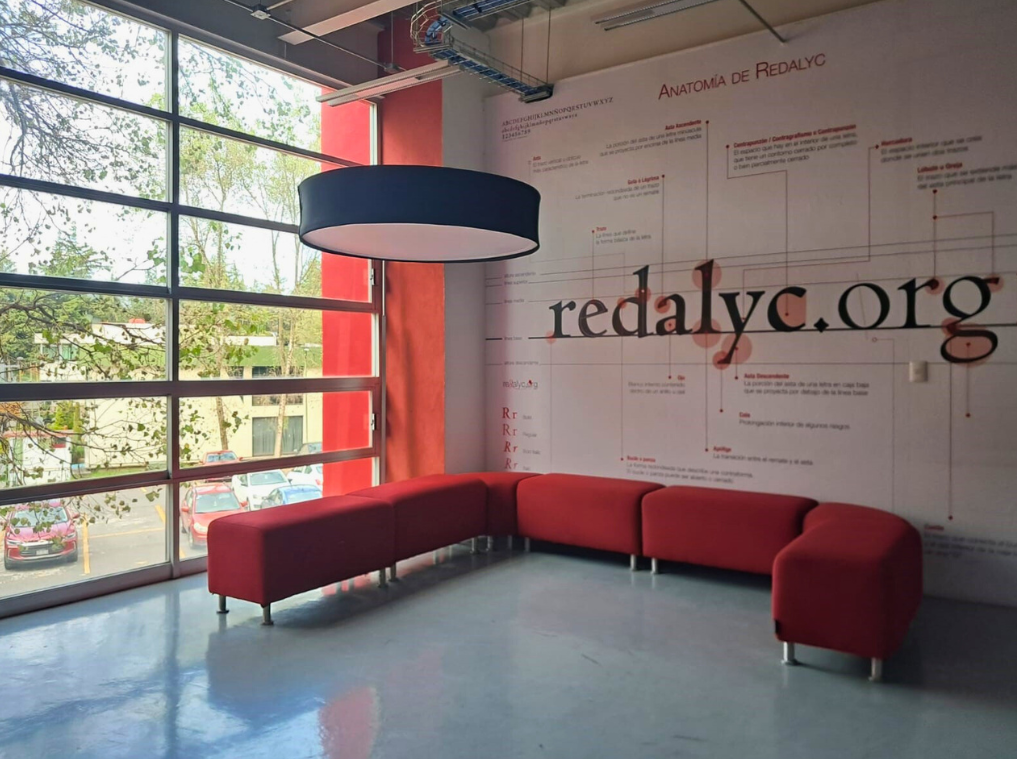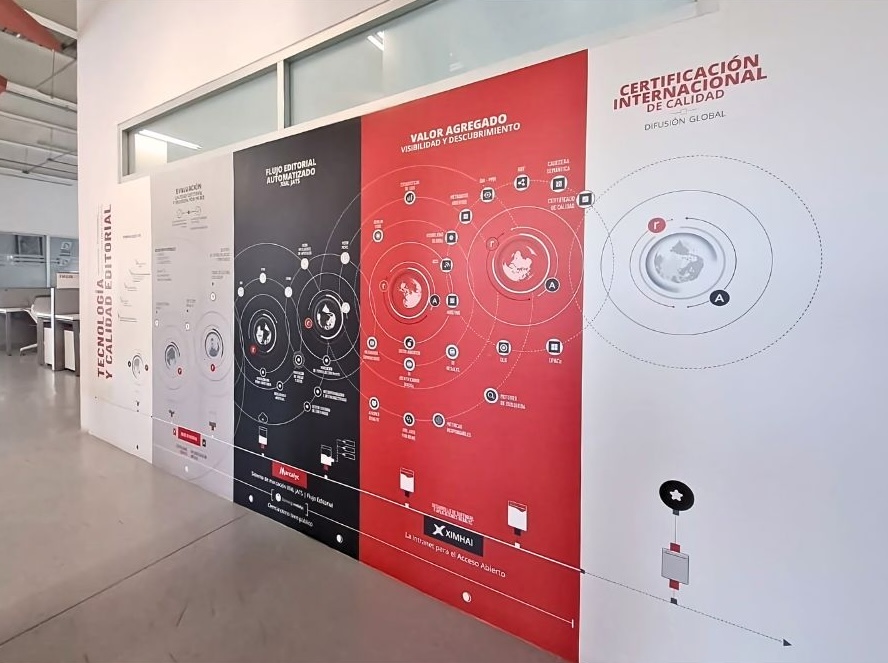
The first version of Redalyc was drawn on a napkin in 2002 by Eduardo Aguado López. A sociology professor at the time, he was talking about how to create a website to upload a journal with Arianna Becerril-García, a computer engineering student.

Eduardo Aguado López
“It was not really planned like a start up with investment and stakeholders,” said Becerril-García, executive director of the nonprofit that now supports a network of scholarly journals from around the world. “We didn’t have a recipe or an algorithm to do it. We were just building a path, always trying to innovate, and listen to journal editors.”
Responding to the needs of journals and working collaboratively with evolving technology has been key to the success of the Redalyc (Red de Revistas Científicas de América Latina y El Caribe, España y Portugal) project, as it was called at the beginning. Owned by the academy and based at the public Autonomous University of the State of Mexico, Redalyc is a scientific information network that serves as an index of open access journals. It includes 1,572 journals and nearly 800,000 full-text articles from 755 institutions in 31 countries.
The non-commercial infrastructure embraces science as a public good that should be free – and freely shared. Rather than relying on Article Processing Charges (APCs), Redalyc open access journals are published under the Diamond Open Access model, supported in ways that are aimed at promoting equity in scholarly communication. The organization is committed to keeping control of publishing within the academic community to ensure a sustainable scientific ecosystem that includes the voices of all who want to participate.
Redalyc was a forerunner of the diamond open access movement and is widely respected for what it has accomplished, said Reggie Raju, director of research and learning services at the University of Cape Town in South Africa. It has managed to overcome financial and regional challenges.
“Redalyc has set the benchmark for us in the Global South. It has carved a path that is fairly unique,” said Raju. “It has shown that when one has no other options, you then become creative and innovative.”
Researchers in the Global South have long been marginalized due to biases such as geographic location, language, and the perception of inferior scholarship, Raju said. Redalyc’s greater inclusion of Indigenous communities makes it a model for advancing social justice, he added.
Redalyc is guided by its ten principles and values listed on its website. Topping the list: 1) Scientific knowledge generated with public funds is a common good and access to it is a universal right; 2) The model of open, academically owned, non-profit, sustainable, metrics-responsible, non-subordinate and non-payment-for-processing (APC) publishing should be strengthened; and 3) Open Access has no future or meaning without an evolution in research evaluation systems that value. The organization also embraces the diversity of scientific journals, the rights of authors, and a cooperative approach to open access publishing.
In recognition of its work, Redalyc received third place in the Academic Institutions Category at the 2023 Innovation in Transparency Contest in Mexico City. Universidad Oscar Ribas recognized it for strengthening South-South cooperation in Angola in 2021. Redalyc was also honored with the Latin American and Caribbean Award for Social Sciences CLACSO “50 Years.”

Arianna Becerril-García
Becerril-García was recently recipient of the 2021 Early Career Scientist Award (South America and the Caribbean) from the International Science Council. She has coordinated various multilateral projects supported by UNESCO in partnership with organizations such as the Indian Statistical Institute, and governmental entities as the Ministry of Education, Science, Technology and Innovation of Angola, where she participated in the recommendations for the national legislation on Open Access.
After the initial idea was sketched out, Redalyc was launched in 2003 with the goal of improving the visibility of scientific publications in Latin America. It started as a portal for social science and humanities journals. In 2006, it opened up to a wider range of journals in a variety of disciplines. It also evaluates the quality and impact of its journals, authors and countries included in its electronic library. Consumers can easily search the Redalyc index by title, author, country or subject. All material is open access and downloadable for free under a Creative Commons license.
Redalyc’s big expansion came in 2018, when its leadership decided to exclusively commit to diamond open access. It extended its work beyond Latin America, Spain, and Portugal to index journals from every part of the world that met its quality criteria.
“It was in reaction to how the open access movement was evolving around the world, with the emergence of APCs in other parts of the world,” Becerril-García said. “We decided to work only with journals that don’t charge authors or readers – those that are non-commercial and academic. We believe that these are the journals that are more vulnerable, in terms of sustainability, but they are public goods strongly contributing to the communication of science. This is exactly the role of how Redalyc fits in the ecosystem.”
Redalyc was established to provide added value to journals—to certify the quality of non-commercial publications, to make them more discoverable. It also provides metrics to show how journals were being used, which is important for recognition and sustainability.
“Honestly, at the beginning, we didn’t imagine that Redalyc would have this role and the growth wasn’t really planned,” Becerril-García said. “We started during the transition to the digital era when journals had basic challenges creating webpages and uploading content. We provided this service for hosting articles.”
For years, Redalyc has served as the main website for many journals. Over time, the organization has also evolved in response to the needs of journals to be more engaged with users, provide different formats and socialize content. Redalyc had the capacity to provide those services that individual journals didn’t possess within universities.
Redalyc helped move many journals to open access by digitizing content, indexing, and providing metrics, said Dominique Babini, open science advisor for the Latin American Council of Social Sciences (CLACSO), a network of 856 research institutions in 55 countries.
“Redalyc looks at open access from a social, political and regional perspective. It really anticipated what open science was all about,” said Babini, who is a member of the Redalyc advisory board. “For 20 years, Redalyc has worked together with other voices in Latin America promoting open access led by the scholarly community. We are very proud to have a project like Redalyc in our region.”
Becerril-García said the organization works cooperatively with institutions and journal editors. Redalyc provides the technology and infrastructure, operating as a team with the universities that produce content for the publications, which are then available through open access to the public. Redalyc is supported by the public university where it is housed in Toluca, Mexico, and a combination of grants. It has about 60-70 full-time staff, most of whom as engineers and software developers. Redalyc is truly integrated with the university, and employs many students in its operation. Recognizing the value of getting the word out to the community, it has a professional film studio to produce training materials and content for outreach.
“We need to work in community and cooperatively in order to have the opportunity to be competitive against commercial publishers,” Becerril -García said. “They have all the money in the world. It’s very difficult to survive being an academic journal with limited resources in developing countries.”
Babini adds: “Redalyc is coherent. It has a clear vision, and it has the strength to stand for it.”
Redalyc and other non-commercial journals are working to act as a market force to prevent a monopoly of publishers. “Commercial publishers come into a region and trap customers with higher costs, inflationary subscriptions and APCs. That is happening in other parts of the world,” Becerril-García said, “but not in Latin America because we have a more diverse ecosystem and strong non-commercial sector from the universities.”
Still, publishers are aggressively working to acquire some regional journals that have been operated by communities for decades, and some have taken the bait – believing a commercial affiliation will make the journal more prestigious, but reality is that it remains the same publication. This makes Redalyc all the more valuable, as it demonstrates that public entities can effectively produce quality journals, offer alternative metrics, and contribute to a healthy scholarly communication system – and that public universities can be successful open access publishers.
“Science should be public good. It can be sustained collectively and provide a universal benefit,” rather than a product or service that needs to be purchased, Becerril-García said. “In Latin America, it’s more like a complexity of resources working together, everybody investing in a piece of the ecosystem and everybody benefits from the result.”
